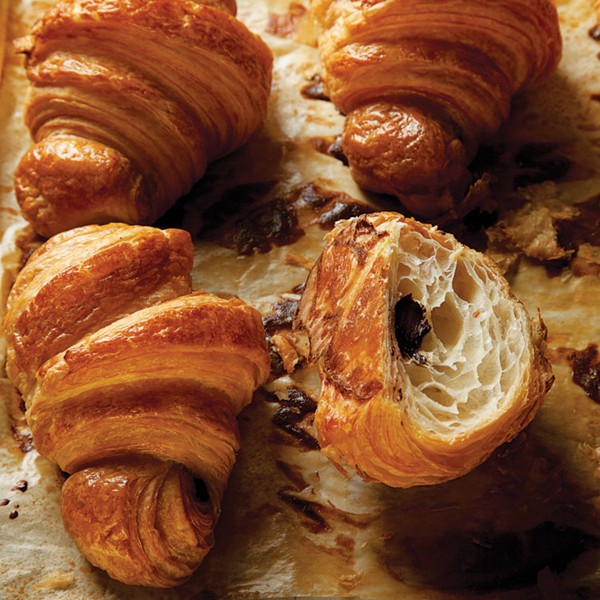The history of the croissant
January 5, 2016 by Darcie
Buttery, flaky, airy croissants are a breakfast staple the world over. The pastry as we know it is a French invention, but its roots can be traced back to 15th century Austria, according to this Lucky Peach article.
The croissant origin story begins in Austria more than 500 years ago with the kipfel, a crescent-shaped morning pastry. It was more brioche-like than the modern croissant, and like many foods, the “history of the kipfel is hazy: the word was used in Austrian cuisine as far back as the thirteenth century, referring to crescent-shaped sweets, but it does not refer specifically to the Viennese breakfast pastry until the fifteenth century, according to Jim Chevallier’s August Zang and the French Croissant.”
While there are alternate (and contradictory)
origin stories for the flaky croissant, it seems likely that
marriage, fittingly enough, played a role in marrying the crescent
shape of the kipfel with pâte
feuilletée (puff pastry), which first appeared in François
Pierre de la Varenne’s Le Pâtissier François in
1683. The marriage between Austrian princess
Marie Antoinette and French king Louis XIV is often attributed to
the creation of the croissant in France. Antoinette allegedly ate
kipfel to remind her of her beloved homeland, calling it
croissant in French and elevating its
popularity.
A Viennese transplant to Paris is credited with introducing a flakier version of the kipfel/croissant, but “references to croissants made with true, yeasted puff pastry dough did not come until the 1900s,” making the croissant as we know it a fairly modern invention. Learn more, including how the availability of butter and sugar through the centurie saffected the development and distribution of the croissant (and other pastries) to the masses, at the Lucky Peach website.
Photo of
Chocolate croissant (Pain au chocolat) from Saveur
Magazine
Categories
- All Posts (6940)
- Antipasto (2135)
- Author Articles (247)
- Book News (935)
- Cookbook Giveaways (983)
- Cookbook Lovers (257)
- Cooking Tips (109)
- Culinary News (299)
- Food Biz People (552)
- Food Online (791)
- Holidays & Celebrations (272)
- New Cookbooks (149)
- Recipes (1500)
- Shelf Life With Susie (231)
- What's New on EYB (133)
Archives
Latest Comments
- Pamsy on What foods do you look forward to the most for each season?
- Pamsy on How cookbooks can help build resilience
- DarcyVaughn on Danube Cookbook Review and Giveaway
- hettar7 on JoyFull – Cookbook Review & Giveaway
- eliza on What foods do you look forward to the most for each season?
- kmwyman on Rooza by Nadiya Hussain – Cookbook Review and Giveaway
- Maryd8822 on The Golden Wok – Cookbook Giveaway
- Dendav on Danube Cookbook Review and Giveaway
- sanfrannative on Rooza by Nadiya Hussain – Cookbook Review and Giveaway
- darty on Danube Cookbook Review and Giveaway